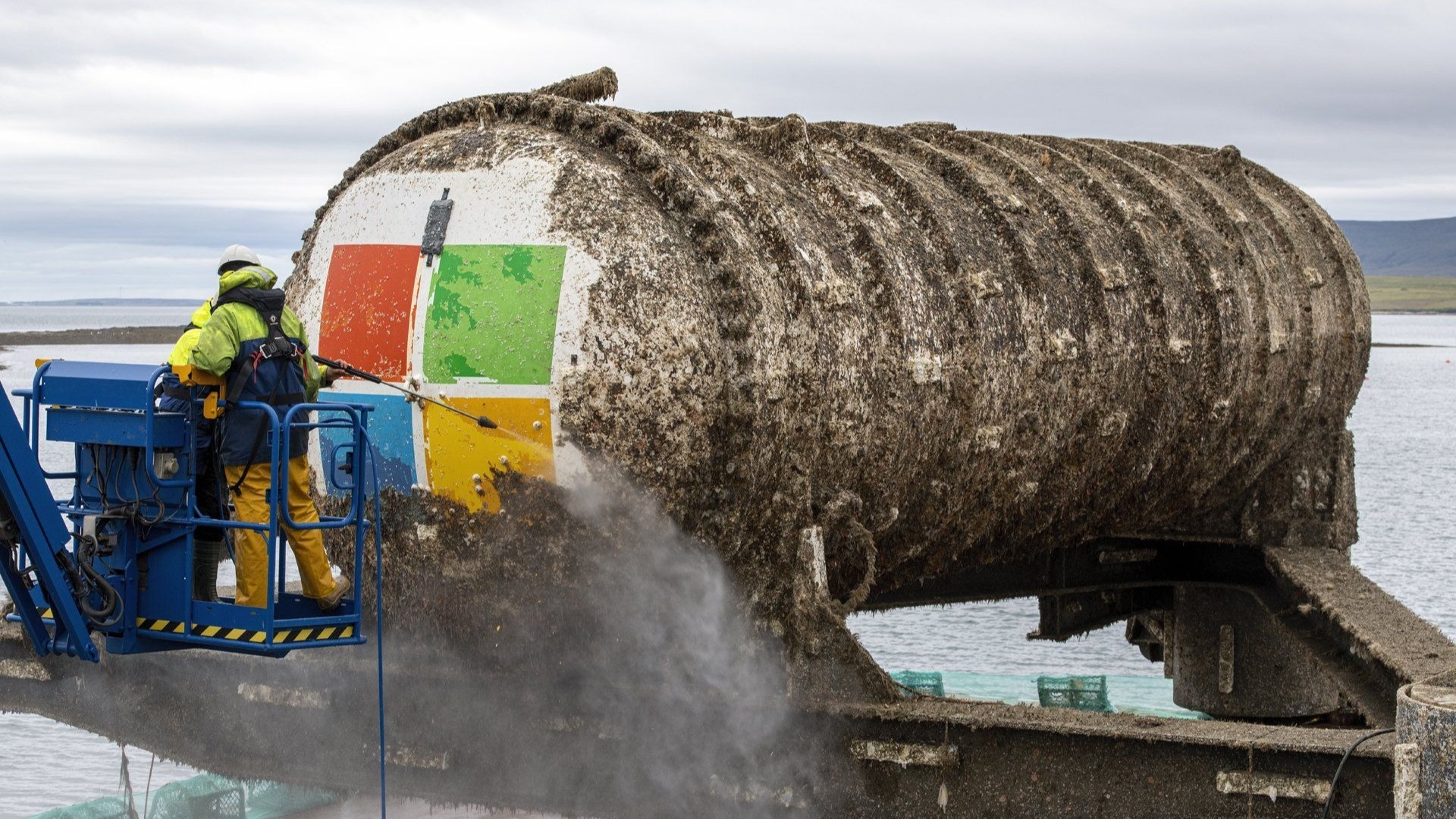
What you need to know
- Microsoft no longer has any active underwater data centers.
- The company experimented with underwater data centers as part of its Project Natick.
- Underwater data centers saw one-eighth of the failure rate compared to on-land counterparts.
- Microsoft explained that it will use what it learned from the project in other cases.
With the heat dome causing temperatures to soar in many parts of the world, jumping into a frigid sea may sound refreshing. But if you do jump into cold waters, you won't have the company of underwater data centers from Microsoft. The tech giant began testing underwater data centers in the North Sea in 2018, but it no longer has any active underwater data centers.
The undersea data centers were part of Microsoft's Project Natick, which aimed to test the feasibility of placing data centers underwater. The experiment saw giant tubes placed 117 feet below the surface of the Scottish sea. The unique environment of the datacenter allowed Microsoft to test several factors, such as filling the data center with nitrogen rather than oxygen.
Humans and machines have very different needs when it comes to creating an environment for optimal performance. Oxygen is essential for people, but it can cause damage to computers. Temperature requirements also differ greatly between mankind and machines. Keeping the data centers separate from humans also prevented anyone from bumping into components.
Project Natick saw interesting results, including underwater data centers having one-eighth of the failure rate of data centers with the same components on land.
While the results seemed promising, Microsoft does not have any active underwater data centers in 2024. The tech giant shared few details on why it has stopped using underwater data centers. Project Natick was an experiment, so there's always a chance Microsoft just wanted to learn from the project and take lessons elsewhere.
"I'm not building subsea data centers anywhere in the world," said Noelle Walsh, Corporate Vice President of Microsoft's Cloud Operations + Innovation team to Data Center Dynamics.
"My team worked on it, and it worked. We learned a lot about operations below sea level and vibration and impacts on the server. So we'll apply those learnings to other cases."
While Microsoft does not have any underwater data centers at the moment, the tech giant plans to use Project Natick as a research platform. Microsoft explained the future of the project in a statement to Data Center Dynamics:
"While we don’t currently have data centers in the water, we will continue to use Project Natick as a research platform to explore, test, and validate new concepts around data center reliability and sustainability, for example with liquid immersion."
There's a good chance that Microsoft will use findings from its Project Natick to improve data centers in other environments.
An ever-growing demand for data centers

Insights from Project Natick and other experiments will become increasingly important going forward. There is a massive demand for data centers on a global scale, and that's only set to go up over time.
Artificial intelligence is everywhere in 2024. From your smartphone to your computer, AI features are increasingly common. While some devices, such as Copilot+ PCs, perform AI tasks locally, much of the data processing for AI is done in the cloud, creating an ever-increasing demand for data centers.
Of course, AI is far from the only type of technology driving the demand for data centers higher. Cloud computing, using a smart home device, and even searching the web require data centers. With billions of devices connected to the web, the demand for data centers almost feels infinite, and that demand is going to continue to grow.
Data centers require energy to operate and require maintenance. Reducing the amount of energy needed by data centers could go a long way in managing energy grids and helping spread resources to other services and devices.







